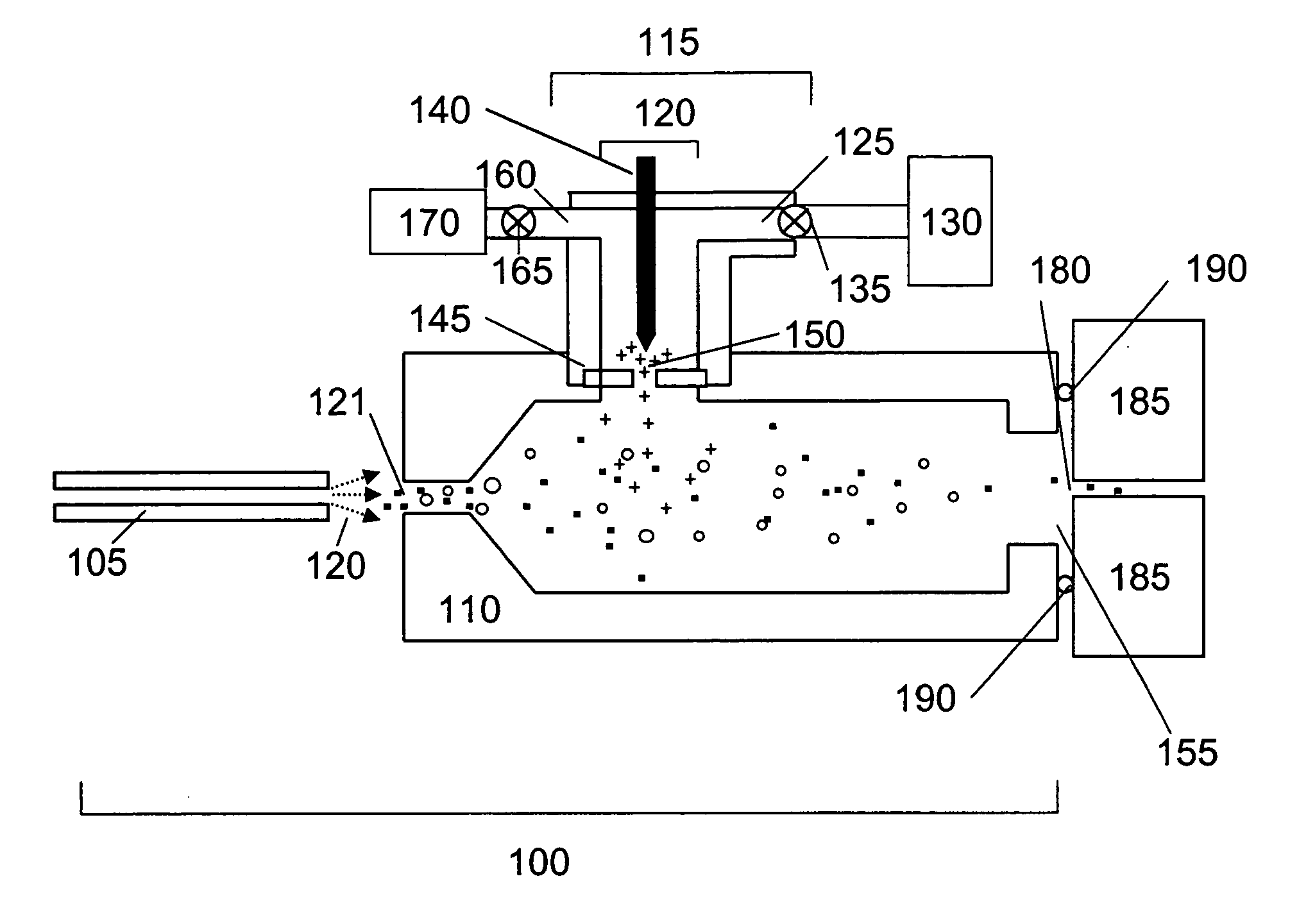Electrospray ionization ion source with tunable charge reduction
a technology of ionization ion and ion source, which is applied in the direction of dispersed particle separation, separation process, chemical apparatus and processes, etc., can solve the problems of reducing the charge-state distribution of said analyte ions, affecting the scope, applicability, efficiency and limitations of mass spectrometry, and conventional ion preparation methods for mass spectrometric analysis are largely unsuitable for high molecular weight compounds such as biomolecul
- Summary
- Abstract
- Description
- Claims
- Application Information
AI Technical Summary
Benefits of technology
Problems solved by technology
Method used
Image
Examples
example 1
Charge Reduction Electrospray Mass Spectrometry Using an Orthogonal Acceleration Time of Flight Mass Spectrometer
[0075]The ability of ion sources of the present invention to provide a source of analyte ions having a reduced charge state distribution for sensitive mass spectrometry detection and characterization was verified by experimental studies. Specifically, sensitivities and mass resolution obtained for high molecular weight biomolecules using the present charge reduction electrospray mass spectrometry (CREMS) techniques were quantified and compared to sensitivities and mass resolution provided by conventional electrospray mass spectrometry methods. Either a corona discharge or an α-particle source was employed to generate anions that abstract protons from electrosprayed protein cations. These desired ion / ion proton transfer reactions predominated, but some oxidation and ion-attachment reactions also occurred leading to new peaks or mass-shifted broader peaks while decreasing s...
example 2
Charge Reduction Ion Trap Studies
[0118]The present invention provides versatile ion generation methods and devices that are compatible with a range of ion collection, analysis and detection systems. To exemplify this quality of the present invention, a charge reduction ion source of the present invention was directly interfaced with an ion trap mass spectrometer. The mass spectra acquired demonstrate that methods and devices of the present invention provide an efficient source of ions having a controlled extent of charge state reduction to an ion trap mass analyzer. In addition, the results show that ion sources of the present invention are capable of generating mass spectra with enhanced peak-to-peak separation relative to conventional ion sources.
[0119]The mass spectra of a sample containing a BSA (bovine serum albumin) tryptic peptide (MW=1419.5 amu) having the amino acid sequence SLHTLFGDELCK was determined using a conventional electrospray ionization ion source and a charge red...
example 3
Nozzle Extension—Charge Reduction Chamber
[0122]The present invention includes ion sources for a mass spectrometer having a charge reduction chamber provided as a nozzle extension. In this embodiment, the nozzle extension-charge reduction chamber is provided in fluid communication with an electrospray ion source (or other source of analyte ions such as a nebulizer source) and directly interfaced with the nozzle (i.e. the inlet of the mass spectrometer) or equivalent inlet component of a mass spectrometer. Analyte ions are generated by the electrospray source, conducted through the nozzle extension-charge reduction chamber wherein they undergo controlled charge reduction and are directly transported through the nozzle of the mass spectrometer. In this embodiment, the nozzle extension is positioned and held at an electric potential for promoting formation of the electrospray (i.e. establishes the necessary potential difference between the sample discharged and the surface of the nozzle...
PUM
 Login to View More
Login to View More Abstract
Description
Claims
Application Information
 Login to View More
Login to View More - R&D
- Intellectual Property
- Life Sciences
- Materials
- Tech Scout
- Unparalleled Data Quality
- Higher Quality Content
- 60% Fewer Hallucinations
Browse by: Latest US Patents, China's latest patents, Technical Efficacy Thesaurus, Application Domain, Technology Topic, Popular Technical Reports.
© 2025 PatSnap. All rights reserved.Legal|Privacy policy|Modern Slavery Act Transparency Statement|Sitemap|About US| Contact US: help@patsnap.com



